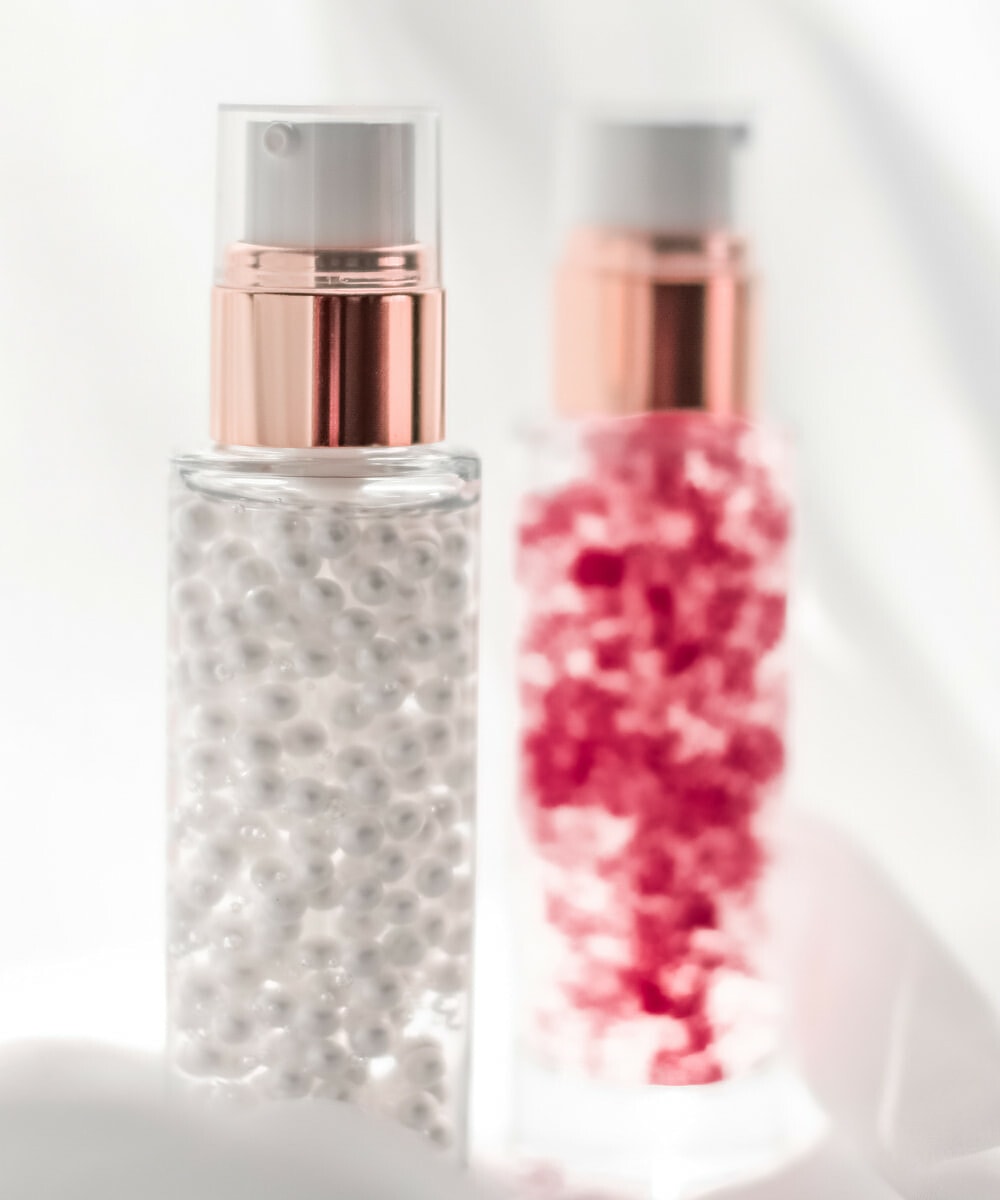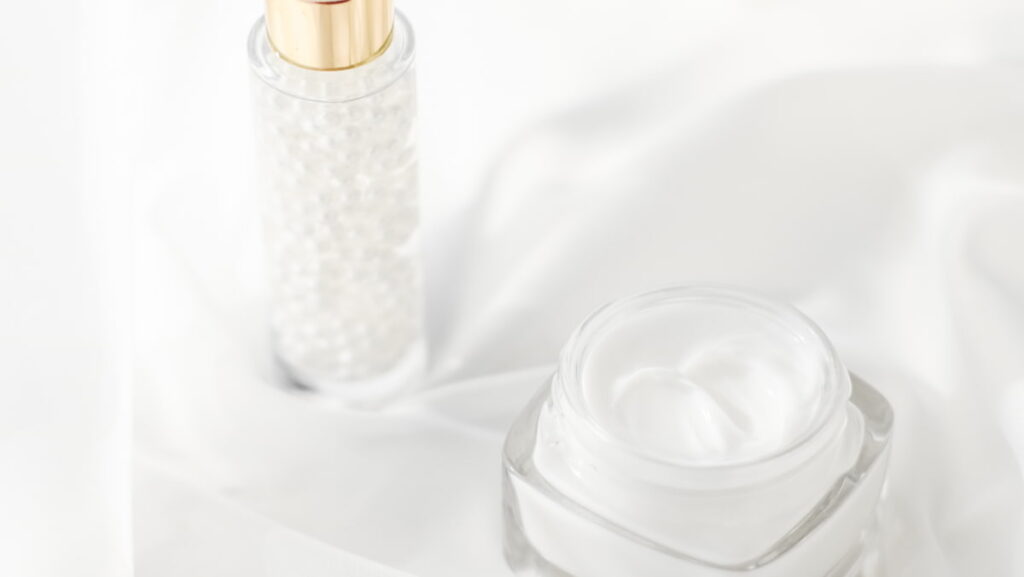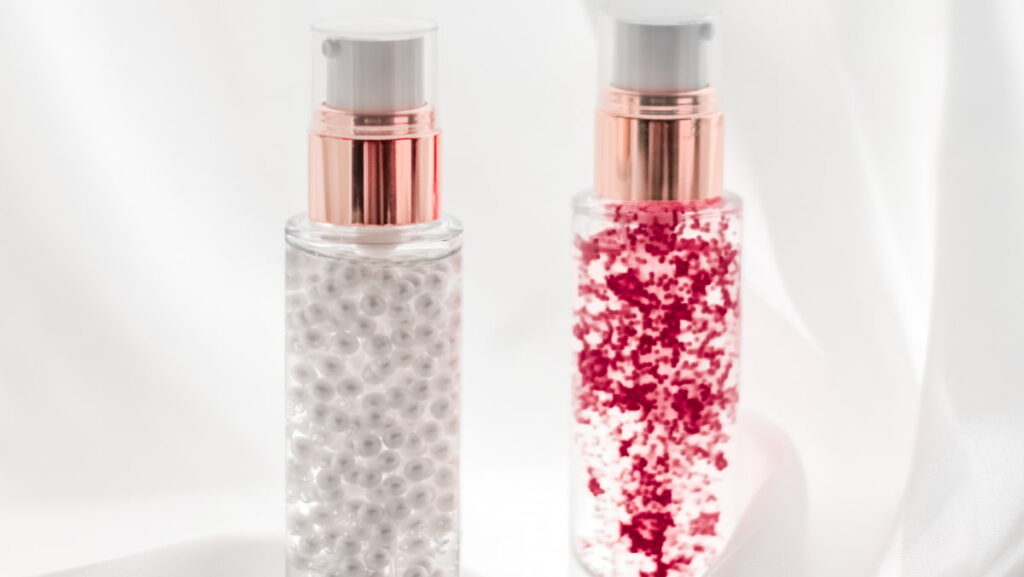
For years, beauty enthusiasts have argued over the age-old question: should you apply primer or moisturizer first? With so much conflicting information out there, it can be confusing to decide which product to reach for first.
But don’t worry – we’ve done the research and finally settled the debate once and for all! In this blog post, you’ll learn the following:
- If you should apply primer or moisturizer first
- Why you should use a moisturizer
- Why you should use a primer
- How to apply each of them
- And much more! So keep on reading.
Do You Need To Apply Primer Or Moisturizer First?
Primer and moisturizer are a match made in heaven that serves as a base for the best makeup looks. They have very different compositions and uses, but both precede foundation.
Therefore, this may create confusion; does face primer go on before or after moisturizer?
When it comes to a successful makeup routine, the order of application is almost as important as the products themselves! So, the answer to the dilemma – primer or moisturizer first – should be as clear as day!
Moisturizer comes first! Then primer, and then foundation.
Moisturizer is an integral part of any skincare routine. All skin types – be it as dry as the dessert or as oily as a frying pan – need the essential moisture.
Primer, on the other hand, can create a flawless base for makeup to glide on, but it is not necessary. What a primer does is form a film between your skin and makeup. It blurs fine lines, pores, and other imperfections, creating a picture-perfect finish.
Some primers do offer added skincare benefits, such as hydration, sun protection, or oil control, but they cannot replace the respective skincare products.

How Long To Wait Between Moisturizer And Primer?
When it comes to beauty routines, one of the key steps is knowing when and how to layer your products. The order in which you apply them can make a big difference in the overall look and feel of your makeup.
One common question is, how long should you wait to put primer on after moisturizer? And what about primer and foundation? The answer largely depends on what type of moisturizer and primer you use.
Makeup-wise:
- If you use a lightweight, gel-based moisturizer, you can apply your primer immediately after moisturizing.
- If you use a heavy cream moisturizer, it’s recommended to wait at least five to ten minutes to let the moisturizer fully absorb into your skin before applying primer.
This is because heavy moisturizers can create a barrier on your skin’s surface, preventing the primer from properly adhering to your skin.
Primer-wise:
- If your primer has a silicone base, it may take longer to dry down completely. So, you may need to wait a few extra minutes before applying makeup.
Waiting the appropriate amount of time between moisturizer and primer ensures you get the most out of both products and can achieve a smooth, flawless base for your makeup.
Is A Face Primer And Moisturizer The Same?
The huge question of whether to apply primer or moisturizer first may stem from the common idea that these two products are the same.
So, is a primer the same as a moisturizer? Drum roll…. No, they are not!
At one end of the ring, we’ve got primers. A primer’s main role is to create a smooth canvas for makeup application and help keep it in place all day long.
They often contain silicone-based ingredients, which fill in pores and fine lines, resulting in an even complexion free of blemishes or creases. Many primers come tinted, so they can blur out any unevenness on your complexion while keeping everything else intact.
Other primers may include light-reflecting particles or SPF protection for added sun protection when you go outdoors during the daytime. There are also formulas with skincare benefits built into them, such as hydration or oil control.
At the other end of the ring, we’ve got moisturizers. Moisturizers are designed to hydrate the skin by providing essential nutrients like vitamins and antioxidants while locking moisture into the skin cells. They can also be formulated with anti-aging benefits that reduce wrinkles and give the skin a youthful glow.
If I Use Primer, Can I Skip Moisturizer?
Honey, no! Definitely, not!
Primers have become a staple in many people’s beauty routines, reaching the pantheon of beloved beauty products. Some even have hydrating formulas. But can primer replace moisturizer?
The short answer is no – primers should not be used instead of moisturizers. While primers can serve as an additional layer of hydration (if they have a hydrating formula), they are designed to sit on top of the skin.
They cannot deliver the hydration or nourishment your skin needs in the deeper layers. Primers also cannot do anything to repair damage caused by sun exposure or environmental pollutants.
Moisturizers, on the other hand, contain hydrating ingredients such as hyaluronic acid, which draw moisture into the deeper layers of the epidermis and lock it there, preventing water loss throughout the day.
Most moisturizers also contain vitamins and antioxidants, which protect against free radical damage and slow down the aging processes of skin cells. These vital components make moisturizers essential and irreplaceable.
Bottom line: You need more than just primer if you want healthy skin. Your moisturizer is your best friend.
Why Should You Use A Face Primer?
Even though primer can elevate your makeup look to the heavens, many of you may not have integrated it yet into your lives. Let’s see why you should use a face primer.
Just a quick disclaimer: Do you need to use it? No – Would you want to use it after finding out the magic tricks it does? Absolutely, yes!
Using a face primer is for the makeup lover who looks for a smooth and glowing complexion. Primer creates the perfect base for makeup application and makes it last longer throughout the day. You don’t have to worry about caked-on makeup due to oily skin or makeup sitting badly on your dry patches.
What’s more, primers can be formulated with skin-nourishing ingredients such as vitamins and antioxidants that help keep your skin healthy and hydrated (additionally to other skincare products, of course!).
Primers add a barrier film for extra protection against environmental pollutants, which can age your skin prematurely or cause breakouts over time. They also reduce shine by absorbing excess oil without drying out the skin, as some mattifying products do.
Face primers come in many different formulations, so there’s something for every skin type! No matter what your skin care needs are, there’s the perfect primer match for you!
To sum up: If you’re looking for flawless coverage, smoother texture, and longer wear, then adding a face primer should be at the top of your mind!
Can You Wear Primer Without Makeup?
Yes, you can wear primer without makeup. Did you know that primers can do a lot for your skin? They’ve got all kinds of good stuff in them, like SPF (sometimes though) and nutrients, that can help protect your skin and keep redness and irritation in check.
And they don’t just hydrate your skin – they can also make your pores look smaller, control oil, and even help with fine lines and wrinkles.
Some of them can even make you look like you’re ready for a magazine photoshoot! But remember, picking the right primer for your skin type and using it the right way is key to getting the best results.
Are There Any Disadvantages Of Using Primer?
It’s good to know that there aren’t many disadvantages to using a primer, as it is a generally safe product. However, it depends on your skin and whether you’re using the right primer. Here are some considerations:
- Skin Sensitivity: Some individuals may be sensitive or allergic to certain ingredients commonly found in face primers. This can lead to skin irritation, redness, or breakouts. It is important to check the ingredients list and perform a patch test before applying a new primer to the entire face.
- Clogged Pores: Certain primers, especially those with heavier formulas or silicone-based ingredients, can potentially clog pores and contribute to the development of acne or blackheads. This is particularly relevant for individuals with oily or acne-prone skin. Choosing non-comedogenic or oil-free primers may help mitigate this issue.
- Incompatibility With Skin Type: Not all primers work well with every skin type. For example, a mattifying primer that controls oil may be too drying for individuals with dry skin, while a hydrating primer might be too heavy for those with oily skin. It may require some trial and error to find the right primer that suits your specific skin type and concerns.

Why Should You Use A Moisturizer?
Moisturizers are an essential part of any skincare routine to help keep your skin looking healthy and hydrated. When used regularly (and from a young age), a moisturizer can have the following benefits:
- Moisturizer improves the appearance of dry, scaly, or patchy skin.
- Reduces wrinkles and fine lines – It keeps your complexion plump and supple by filling in fine lines caused by dehydration while promoting collagen production, which leads to firmer, more elastic-looking skin over time.
- Protects against environmental damage such as windburn and sunburn – Many modern formulas contain SPF protection to block those harmful UV rays which cause premature aging as well as dark spots or discoloration on certain areas of the face.
- Adds suppleness to the complexion and evens out uneven skin tones.
- Moisturizing also helps lock in moisture from water-based products like cleansers or toners so they don’t evaporate quickly during the day.
Moisturizers come in various forms, such as lotions, creams, oils, mists, etc., to serve your individual needs and preferences. When choosing a moisturizer, you should consider factors such as:
- Your skin type (dry/oily/ combination)
- Specific skincare concerns (acne/rosacea)
- Environmental conditions (cold weather/hot summers)
To sum up: Using a quality moisturizer every single day is one of the best things you can do for your skin’s health, ensuring a glowing and beautiful complexion all year round!
How To Prime And Moisturize
Okay! So now, we know the correct order of things: primer comes AFTER moisturizer. But how is it best to apply them?
How To Apply Moisturizer (Properly)?
- Cleanse your face thoroughly;
- (This is where toners, serums, essences, treatments, etc. come)
- Dot the moisturizer on your forehead, cheeks, chin, and nose;
- Use your fingertips or a makeup brush to blend the moisturizer into your skin gently;
- Don’t forget to apply the moisturizer to your neck as well, especially if you plan to wear foundation on your neck;
- Give the moisturizer time to absorb into your skin before applying primer; this will help to prevent the primer from sliding off or mixing with the moisturizer.
Pro tip: You can use gentle upward motions to beat the force of gravity.
How To Apply Primer (Properly)?
- Apply a pea-sized amount of primer on your fingertips, makeup brush, or sponge.
- Apply the primer all over your face, making sure to blend it well and cover all areas evenly, including around your eyes and lips.
- Wait for a minute or two for the primer to settle before applying your makeup.
- Apply your makeup as usual and enjoy your flawless base that will last all day.
Pro tip: Choose a primer that suits your skin type and has the benefits you are looking for.
Conclusion On Primer Or Moisturizer First
In conclusion, the debate over whether to apply primer or moisturizer first has been settled! The correct order of application for a successful makeup routine is moisturizer first, then primer, and finally, foundation.
It is important to wait the appropriate amount of time between moisturizer and primer to ensure that you get the most out of both products.
Moisturizer provides essential moisture, nutrients, and anti-aging benefits to all skin types, while primers create a smooth canvas for makeup application.
Primers can serve as an additional layer of hydration, but they cannot replace moisturizers in providing essential nourishment to the deeper layers of the skin.
Therefore, moisturizer is essential and irreplaceable for healthy skin, while primer is an excellent addition to elevate makeup looks to the heavens.

Love following you- I learn so much about what to do and not do –you are very helpful. Thanks so much. Dianne.
Thank you so much Dianne, I really appreciate your kind words! 🙂